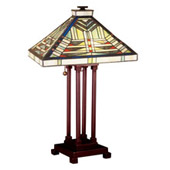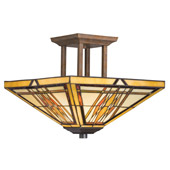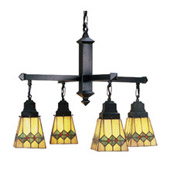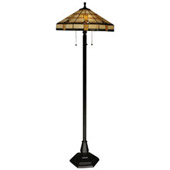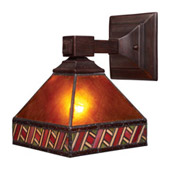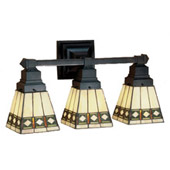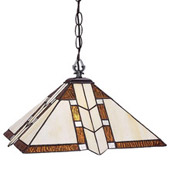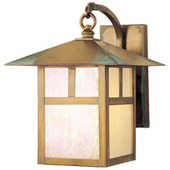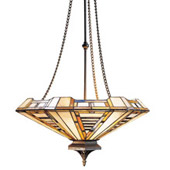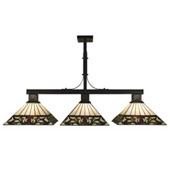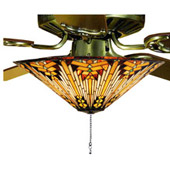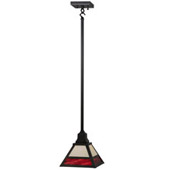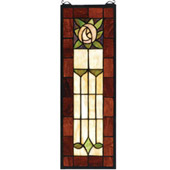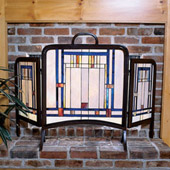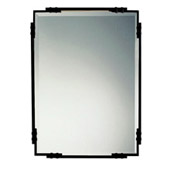
Craftsman/Mission Lighting and Home Decor
About Craftsman/Mission Style
Craftsman style originated in 1903 when architects Henry Mather Greene and Charles Sumner Greene began designing simple bungalows in Pasadena, California. By 1909 they had built several outstanding examples that were termed "ultimate bungalows". The Greene brothers drew inspiration from several influences: the English Arts and Crafts movement, oriental wooden architecture, and their own experience in the manual arts. The result was a style of house that had low-pitched sloping roofs with wide overhangs, exposed roof rafters under the overhangs, decorative beams under the gables, and porches with square column roof supports that often continued all the way to the ground. Larger houses sometimes featured multiple roof lines, trellised porch roofs, oriental flared elements, stone exterior chimneys, or sloping foundation lines. Craftsman bungalows were such a stunning departure from Victorian style architecture that it became, through the circulation of catalogs and pattern books, the most popular residential style in America from 1905 through the early 1920s.
At the same time the Greene brothers were changing architecture in California, Frank Lloyd Wright was doing the same in the Midwest. His Prairie style of architecture used some similar design elements as Craftsman, taken in a different direction. Both Prairie and Craftsman styles were revolutionizing the look of America's living quarters.
If the exterior of houses was being transformed, interiors needed transforming, too. The Victorian era produced furnishings that were fussy and covered with carved organic details. To walk into a Victorian room was a dizzying experience of viewing clashing details covering every square inch. A reprieve came in the form of Craftsman and Mission style furniture (not to be confused with Mission style architecture, which took its influence from Spanish California missions). Mission style furniture emphasized the use of flat panels of oak wood, with simple vertical and horizontal lines. Craftsman style furniture had its roots in the American Arts and Crafts movement, which promoted artistic work in all forms of handicraft. It was a reaction to the Industrial Age's mass-produced overly ornamented furniture. Arts and Crafts represented a return to the dignity of individual design, respect for the relationship between form and function, and careful design of furniture to be harmonious in its surroundings. In this case, Craftsman furniture was perfectly suited to Craftsman houses.
The most famous of Craftsman designers was Gustav Stickley. He popularized the style with the publication of his magazine, "The Craftsman". Stickley's design sensibilities were simplicity and staying true to materials. He used quarter-sawn oak lightly stained, exposed mortise-and-tenon joints, dyed leather, upholstery materials, and iron or copper hand-hammered metal accents. Stickley's offerings broadened out to include textiles, lighting, and metalwork.
Dirk van Erp was well-known for his copper and mica Arts and Crafts lamp designs, created during the same time period as the Craftsman style. Lamps Beautiful has a good selection of Dirk van Erp reproductions as well as tiffany stained glass lamps in Craftsman patterns. Typical of Craftsman style lamps is a square or polygonal shade. Materials include mica, metal, wood, and stained glass.

